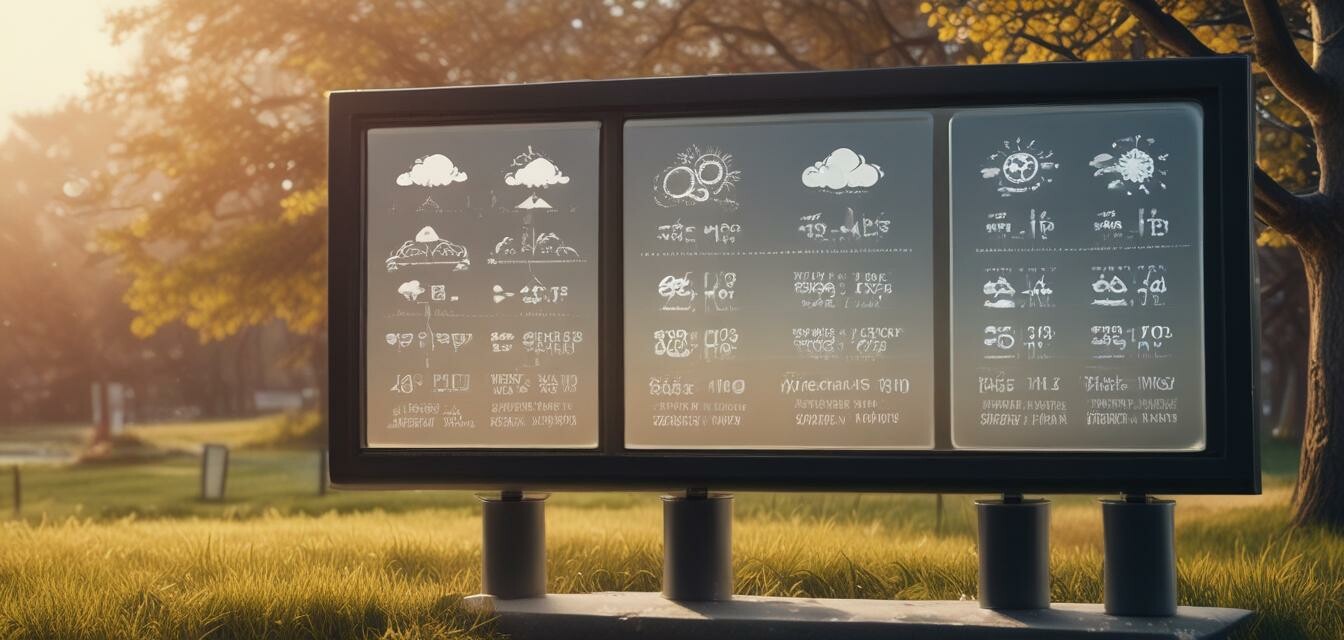
Seasonal Tips for Using Your Weather Station
Key Takeaways
- Adjust your weather station for seasonal changes for optimal accuracy.
- Regular maintenance is crucial for reliable readings.
- Utilize different features of your weather gadget during various seasons.
- Explore creative uses for weather data in outdoor activities or educational settings.
Weather stations are remarkable tools for monitoring and understanding atmospheric conditions. As seasons change, so do the demands on these devices. It’s essential to adjust your setup to ensure accurate data readings throughout the year. In this article, we will cover valuable seasonal tips for using your weather station effectively.
Understanding seasonal variations
Every season brings unique weather patterns. Understanding these can help you make the most of your weather station. Here’s a brief overview of what to look for:
| Season | Key Observations | Adjustment Tips |
|---|---|---|
| Spring | Increased rainfall and humidity. | Ensure your rain gauge is clean and calibrated. |
| Summer | Higher temperatures and potential storms. | Position the sensor in a shaded area to avoid overheating. |
| Autumn | Dropping temperatures and changing winds. | Check anemometer functionality to measure wind gusts. |
| Winter | Snow accumulation and freezing temperatures. | Regularly remove snow from sensors to prevent blockages. |
Spring season adjustments
As spring arrives, your weather station might need some specific adjustments:
- Clean your rain gauge monthly to ensure accurate readings since spring often brings heavy rainfall.
- Check the humidity sensor settings to get precise data on the rise of humidity levels.
Utilizing data for planning
Spring data can also help you plan outdoor activities. Use your weather gadget to track:
- The best times for planting.
- Rain patterns to optimize watering schedules.
Summer season strategies
During summer, keeping your weather station functional means paying attention to heat:
- Position your temperature sensor in a shaded area to prevent overheating.
- Monitor storms closely by using your anemometer to track wind speeds before storms hit.
Engaging with community
You can also leverage your weather data in your community:
- Share your local data on community boards to help with event planning.
- Join local weather clubs to compare findings and enhance your knowledge.
Autumn season preparations
As temperatures drop in autumn, here’s how to get ready:
- Ensure your devices are calibrated to capture changing wind patterns.
- Check battery levels regularly, as cooler weather can affect performance.
Collecting data for educational purposes
Weather data gathered in autumn can be insightful for educational projects:
- Create a weather chart documenting temperature and wind changes over time.
- Use your station’s data to study the effects of wind on leaf changes.
Winter season maintenance
Winter maintenance is crucial for ensuring your weather station continues to perform:
- Regularly remove snow accumulation from sensors and gauges to maintain accuracy.
- Inspect your weather station for wear and tear to avoid breakdowns.
Leveraging winter weather data
In winter, your weather station can be a valuable resource:
- Track temperature fluctuations to better understand heating needs in your home.
- Monitor snowfall and melting patterns for local analysis.
Pros
- Accurate and timely weather data throughout the year.
- Enhanced understanding of local climate patterns.
- Increased awareness of weather trends for better preparedness.
Cons
- Requires regular maintenance and calibration.
- Weather conditions can affect sensor performance.
Conclusion
Maintaining and utilizing your weather station according to the seasons is key to maximizing its benefits. By adjusting your device for seasonal variables, you can enjoy accurate and relevant weather data all year round. For more tips and tricks on optimizing your weather gadgets, explore our Tips and Tricks section.